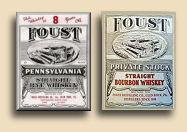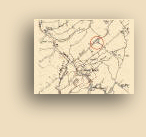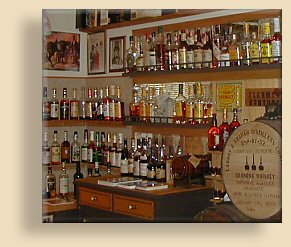American
Whiskey
Rye Distilleries of Eastern
Pennsylvania & Maryland
February 20, 2006 York County: Foust things Foust |
|
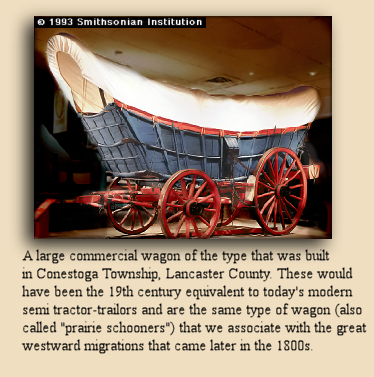 THE DISTILLING OF WHISKEY from rye and corn was a
profitable business in the lower counties of Pennsylvania from the 1780s to well
into the 19th century.
THE DISTILLING OF WHISKEY from rye and corn was a
profitable business in the lower counties of Pennsylvania from the 1780s to well
into the 19th century. 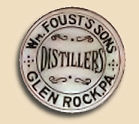 And during that period, York and Lancaster counties
exceeded all other Eastern Pennsylvania areas combined. As early as 1796 there
were hardware stores that used a copper still as a sign in front of the store.
And during that period, York and Lancaster counties
exceeded all other Eastern Pennsylvania areas combined. As early as 1796 there
were hardware stores that used a copper still as a sign in front of the store.
Whiskey distilled in Lancaster County was mostly taken east to be sold in Philadelphia and Wilmington, while York county distillers sold nearly all of their product in Baltimore to the south. Transportation during the early 1800s was usually by large wagon -- Conestoga wagons originated in Lancaster County -- drawn by four or six horses. Each wagon could carry four hogsheads of whiskey, a hogshead holding about a hundred and fifty gallons.
Much of the spirits produced were made from whatever was left
over from grain-milling operations, and the ingredients were numerous. According
to Prowell's 1907 history of York County, one of the farmers' account books from
before 1820 had the following interesting item: “Took fifty bushels of
screenings to the distillery.”The historian suspects a strong probability that
this refuse was used for the manufacture of spirits and that the product was not
Pure Rye, as recognized in 1907.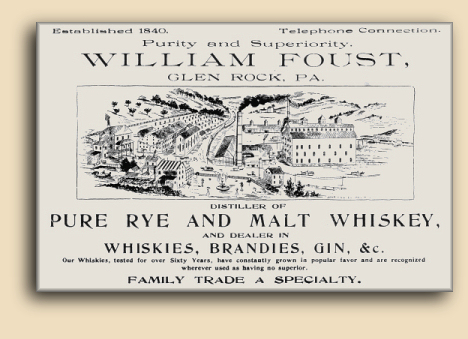
As far as "drinking whiskey" was concerned, again according to
Prowell's work, the old distillers living at that time recalled
that chiefly it was corn whiskey. By 1907, when Prowell's history was published,
nearly all commercial distilling in the area was rye whiskey. And probably aged
rye at that.
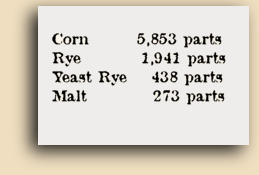 Or bourbon. Another of the account books cited by Prowell gives the
number of bushels of ingredients used within a certain number of months:
Or bourbon. Another of the account books cited by Prowell gives the
number of bushels of ingredients used within a certain number of months:
Prowell uses this to illustrate the predominance of corn as a grain for
distilling, showing the use of corn to be well over twice that of the next
grain. However, the use of the word "Parts", the selection of grains listed, and
the proportions (69% corn, 23% rye, 8% malt/yeast) cause us to believe Prowell
was looking at a bourbon mash bill. The history doesn't specify the
timeframe,
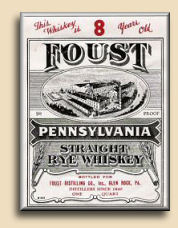 but it was probably much closer to 1907 than to 1820.
but it was probably much closer to 1907 than to 1820.
Even in the early 1800's, though, there was a significant difference in the prices received for corn and rye whiskey. Corn whiskey of fairly good quality sold in Baltimore for twenty cents a gallon. For some of the best rye whiskey the distiller could get up to eighty cents a gallon. It seems likely to us that the corn whiskey was raw and the rye whiskey fetching four times the price was aged.
Of most of these old distilleries there is nothing left.
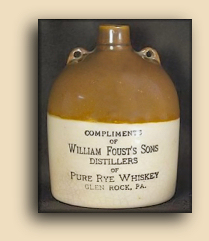 Even in
1907 York County was home to only six working distilleries, all of which
produced aged rye whiskey. Among them was that of William Foust in Glen Rock., a
community located about fifteen miles from York, Pennsylvania and about twenty
miles from Westminster, Maryland.
Even in
1907 York County was home to only six working distilleries, all of which
produced aged rye whiskey. Among them was that of William Foust in Glen Rock., a
community located about fifteen miles from York, Pennsylvania and about twenty
miles from Westminster, Maryland.
Built in 1858, the Foust distillery was located in a hollow
about a mile or so north of town,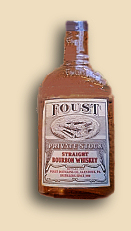 although he later built an extension facility
within Glen Rock, near the railroad station. The distillery was an elaborate
affair, with a six-story warehouse and a company town, Foustown, complete with
housing, a railroad station, state-of-the-art communications (i.e., a telephone
line) and even a "town square" with a decorative water fountain. The distillery
processed as much as 3,000 barrels annually prior to shutting down with
prohibition.
although he later built an extension facility
within Glen Rock, near the railroad station. The distillery was an elaborate
affair, with a six-story warehouse and a company town, Foustown, complete with
housing, a railroad station, state-of-the-art communications (i.e., a telephone
line) and even a "town square" with a decorative water fountain. The distillery
processed as much as 3,000 barrels annually prior to shutting down with
prohibition.
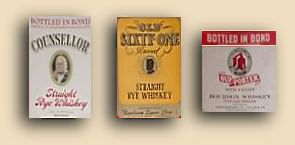 After repeal an attempt was made to refit it for producing
industrial alcohol during World War II, but the war ended before production
could be started. The brick smokestack you see in the photos was built at that
time, but never used. The
Foust brand continued to be produced and apparently acquired by the Sherwood
Distillery in nearby Westminster, Maryland, who bottled Foust and several other
of their brands here. There are a few farmhouses remaining in the area, but
mostly there is nothing left of Foustown.
After repeal an attempt was made to refit it for producing
industrial alcohol during World War II, but the war ended before production
could be started. The brick smokestack you see in the photos was built at that
time, but never used. The
Foust brand continued to be produced and apparently acquired by the Sherwood
Distillery in nearby Westminster, Maryland, who bottled Foust and several other
of their brands here. There are a few farmhouses remaining in the area, but
mostly there is nothing left of Foustown.
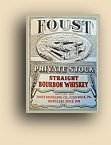 There is ANOTHER village named Foustown northwest of York, but that doesn't appear to have any relationship to
this area.
There is ANOTHER village named Foustown northwest of York, but that doesn't appear to have any relationship to
this area.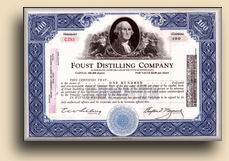
Glen Rock's town historian wrote that on March 7, 1977 the
wrecker's ball completed what
had already been going on for years... although mostly late at night. He also
told us how to find where the old distillery had been and where these ruins
still stand.
The following are thumbnail
links. Click any of them to see larger pictures
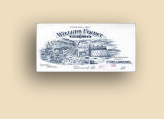 |
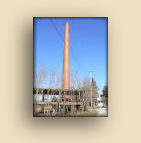 |
|
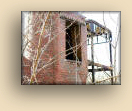 |
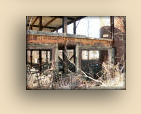 |
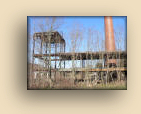 |
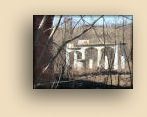 |
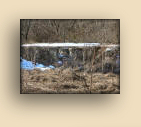 |
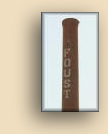 |
